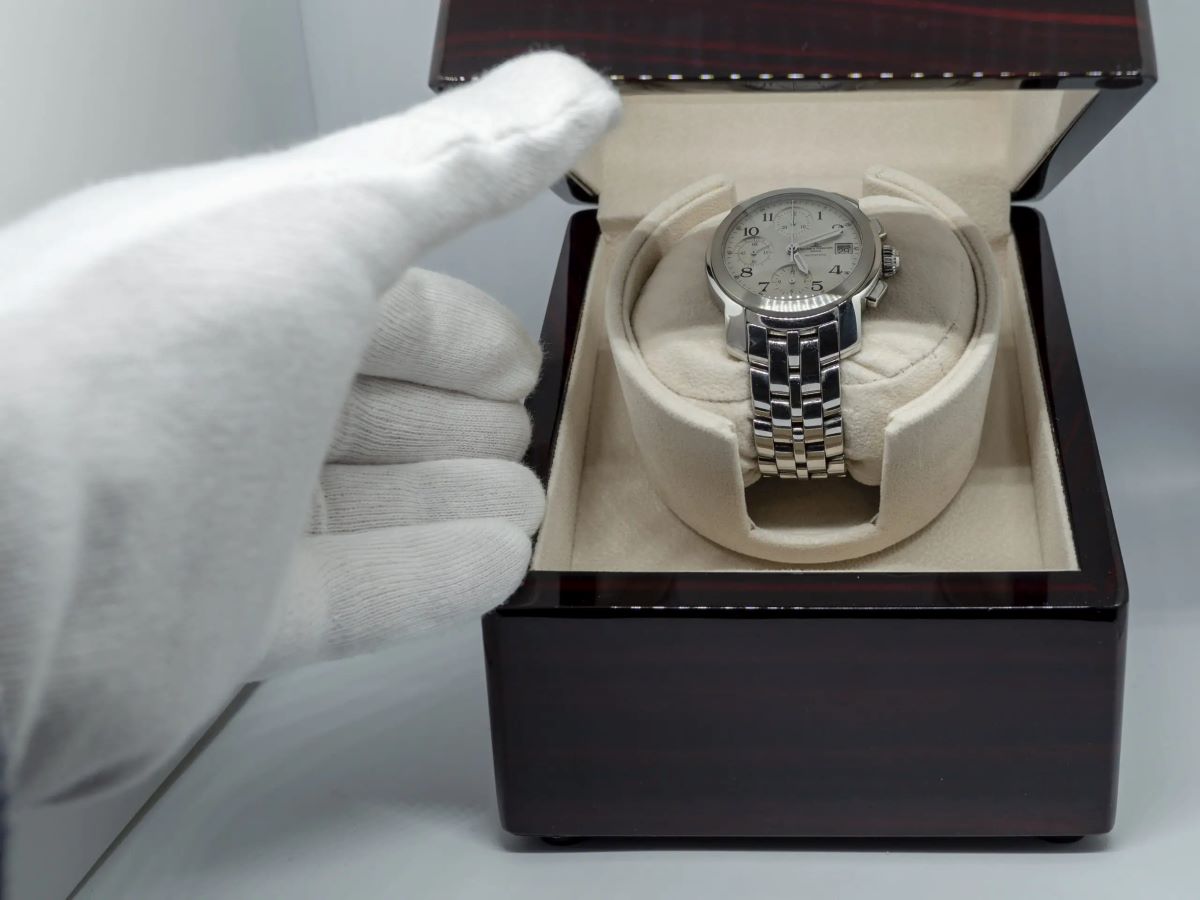

Articles
How To Store An Automatic Watch
Modified: January 6, 2024
Learn how to properly store your automatic watch and prevent it from losing time or getting damaged. Read our helpful articles on watch storage tips and recommendations.
(Many of the links in this article redirect to a specific reviewed product. Your purchase of these products through affiliate links helps to generate commission for Storables.com, at no extra cost. Learn more)
Introduction
Welcome to the world of automatic watches, where timekeeping merges with timeless artistry. Automatic watches are renowned for their intricate craftsmanship, which combines precision mechanics and elegant design. These timepieces are not only functional accessories but also heirlooms that can be passed down through generations.
However, as with any valuable possession, proper storage is essential to maintain the condition and functionality of an automatic watch. Without suitable storage, the watch’s delicate inner mechanisms can be subjected to unnecessary wear and tear, resulting in decreased accuracy and potential damage.
In this article, we will delve into the importance of storing your automatic watch correctly and provide you with various methods and tips to ensure its longevity. Whether you’re a watch collector, enthusiast, or simply own one automatic watch, mastering the art of storage will help preserve your timepiece for years to come.
Key Takeaways:
- Proper storage and maintenance are crucial for preserving the condition and functionality of automatic watches. Consider factors such as duration of storage, climate conditions, and security needs to select the appropriate storage method.
- Regular inspection, cleaning, and winding of automatic watches during storage help maintain their power reserve, prevent moisture-related damage, and ensure optimal functionality. Avoid extreme temperatures and sunlight exposure to protect the watch’s integrity.
Read more: How To Store Automatic Watches
Why Proper Watch Storage is Important
Proper watch storage is of paramount importance for maintaining the longevity and performance of your automatic watch. Here are a few key reasons why:
Protects against physical damage: Automatic watches contain intricate mechanisms that are sensitive to external forces. Storing your watch in a protective case or box helps prevent accidental bumps, scratches, or falls that can disrupt its delicate movement or damage the case and crystal.
Preserves accuracy: Automatic watches rely on precise movement to keep time accurately. Improper storage can negatively impact this movement, leading to a decrease in accuracy over time. By storing your watch correctly, you can help maintain its precision and ensure reliable timekeeping.
Prevents moisture damage: Moisture is a watch’s worst enemy. Exposure to moisture can cause rust, corrosion, and damage to the movement. Storing your watch in a dry environment, away from humidity, helps safeguard against these potential issues and extends the lifespan of your timepiece.
Protects against dust and debris: Dust, dirt, and debris can find their way into the intricate parts of your watch, affecting its performance. Proper storage, such as using watch pouches or sleeves, helps keep your watch free from these particles and reduces the need for frequent cleaning and maintenance.
Preserves aesthetic appeal: Automatic watches are not just functional accessories; they are works of art that exude style and luxury. Proper storage methods, like utilizing watch boxes or cases, help protect your watch’s aesthetic appeal, ensuring that it remains visually stunning throughout its lifespan.
By understanding the importance of proper watch storage, you can maintain the beauty, accuracy, and functionality of your automatic watch, allowing you to enjoy its splendor for years to come.
Factors to Consider Before Storing Your Automatic Watch
Before you tuck away your automatic watch for storage, it’s important to consider a few factors to ensure its well-being and longevity. Here are some key factors to keep in mind:
Duration of storage: The length of time you plan to store your automatic watch will impact the storage method you choose. For short-term storage, simple measures such as using a watch pouch or sleeve may suffice. However, for long-term storage, it is advisable to use a more comprehensive storage solution, like a watch box or case.
Frequency of use: If you plan to wear your automatic watch occasionally during its storage period, consider using a watch winder. A watch winder mimics the natural movement of the wrist and keeps the watch wound and ready for use whenever you desire. This is especially helpful if your watch has additional complications, such as a calendar or moon phase display, which require regular movement to stay accurate.
Climate and environmental conditions: The climate and environmental conditions of your storage area can greatly impact your watch’s well-being. Extreme temperatures, high humidity, and direct sunlight can damage the watch’s movement, crystal, and overall condition. Choose a storage location that is cool, dry, and away from direct sunlight to ensure optimal preservation.
Security and safety: Consider the security and safety of your storage area. If you have valuable automatic watches in your collection, storing them in a safe or vault provides an added layer of protection against theft or damage. A safe or vault not only safeguards your timepieces from external threats but also maintains a consistent environment conducive to their preservation.
Watch maintenance: Before storing your automatic watch, it is advisable to have it serviced and inspected by a professional watchmaker. They can ensure that the watch is in optimum condition, address any issues, and perform necessary maintenance before storage. This helps prevent potential problems from arising during the storage period and ensures that your watch remains in excellent working order.
By considering these factors, you can make informed decisions about the storage method and location for your automatic watch, ensuring its safety, functionality, and longevity throughout the storage period.
Proper Storage Methods for Automatic Watches
When it comes to storing your automatic watch, there are various methods you can choose from. The key is to select a storage solution that provides the necessary protection and maintains the essential functions of your timepiece. Here are some effective storage methods to consider:
- Using a Watch Box or Case: One of the most common and convenient storage methods is using a watch box or case. These boxes are specially designed to accommodate multiple watches and provide individual compartments to keep them separate and protected. Look for a watch box or case with cushioned interiors and a sturdy exterior to prevent any damage to your watch.
- Using a Watch Winder: If you plan to store your automatic watch for an extended period and want to keep it wound and ready for use, a watch winder is an excellent choice. A watch winder mimics the natural movement of the wrist, rotating the watch at regular intervals to keep the self-winding mechanism engaged. This helps ensure that your watch remains accurate and ready to wear whenever you desire.
- Storing in a Safe or Vault: For those with valuable watch collections or concerns about security, storing your automatic watches in a safe or vault provides an added layer of protection. Safes or vaults offer a controlled environment with consistent temperature and humidity levels, safeguarding your watches from potential harm.
- Utilizing Watch Pouches or Sleeves: Watch pouches or sleeves are a simple yet effective storage option, especially for short-term storage or when traveling. These soft fabric or leather pouches provide a protective barrier against scratches and dust, allowing you to store your watch safely in a drawer, travel bag, or suitcase.
- Storing in a Dry and Stable Environment: Irrespective of the storage method you choose, it is crucial to store your automatic watch in a dry and stable environment. Avoid areas with high humidity, extreme temperatures, or direct sunlight, as these can damage your watch’s movement, crystal, and overall condition. Opt for a cool, dry location away from windows or areas prone to temperature fluctuations.
By utilizing these proper storage methods, you can ensure that your automatic watch remains protected, well-preserved, and ready to wear whenever you decide to take it out.
Using a Watch Box or Case
A watch box or case is a popular and effective storage solution for automatic watches. It provides a dedicated space for your timepieces, keeping them organized, protected, and easily accessible. Here’s why using a watch box or case is an excellent choice:
Organization and Protection: A watch box or case typically features individual compartments with soft cushions or pillows where you can securely place each watch. This prevents watches from rubbing against each other and minimizes the risk of scratches or damage to the case and crystal. It also allows you to keep your watch collection organized and easily visible, eliminating the need to search through drawers or boxes to find the watch you desire.
Dust and Moisture Protection: The enclosed design of a watch box or case helps protect your automatic watches from dust and moisture. Dust particles can easily find their way into the intricate mechanism of a watch, affecting its performance and aesthetics. A watch box or case creates a barrier, preventing dust from settling on the watches. Moreover, some watch boxes or cases come with a transparent glass or acrylic cover, further guarding against moisture and allowing you to admire your timepieces without exposing them to the environment.
Portability: Watch boxes or cases often come in various sizes, making them easy to transport and store. Whether you’re traveling or simply moving your watch collection from one location to another, a watch box or case provides a compact and secure solution to keep your watches protected throughout the journey. Look for a watch box or case with a sturdy exterior and a locking mechanism for added security while on the move.
Display and Aesthetics: Some watch boxes or cases are designed with a transparent lid or glass top, allowing you to showcase your watch collection even when they’re not on your wrist. This adds a touch of elegance to your storage setup and lets you enjoy the beauty of your watches at any time. Some high-end watch boxes or cases even come with built-in LED lighting to enhance the presentation of your collection.
Remember to select a watch box or case that accommodates the size and number of watches you own. Consider the quality of the materials, the cushioning provided, and additional features that suit your preferences. With a suitable watch box or case, you can store your automatic watches securely while showcasing their beauty and preserving their longevity.
Read more: How To Store Watches
Using a Watch Winder
If you plan to store your automatic watch for an extended period but still want it to remain wound and ready for use, a watch winder is a valuable tool. A watch winder is a device that simulates the natural movement of the wrist, keeping your automatic watch continuously wound. Here’s why using a watch winder can be beneficial:
Maintains Accuracy: Automatic watches rely on regular movement to keep their timekeeping accuracy. When a watch is not worn, it gradually loses power and stops running. A watch winder ensures that your watch remains properly wound, preventing it from losing accuracy. This can be particularly helpful if your watch has additional complications, such as a calendar or moon phase display, that require frequent movement to stay synchronized.
Convenience and Readiness: With a watch winder, you can keep your automatic watch in a state of readiness. Instead of manually winding and setting the watch each time you want to wear it, you can simply take it out of the watch winder and put it on your wrist. This saves time and ensures that your watch is always ready to go, even if it has been in storage for an extended period.
Prevents Parts Wear: The internal components of a watch go through wear and tear when you wind it manually. By using a watch winder, you minimize the stress on these parts and reduce the risk of excessive wear. This can help extend the overall lifespan of your timepiece and reduce the frequency of servicing or repairs.
Showcases Complications: If your automatic watch has intricate complications, such as a chronograph or a perpetual calendar, a watch winder allows you to showcase these features when the watch is not on your wrist. As the watch winder rotates, the complications keep functioning, adding visual appeal and enhancing your overall watch-winding experience.
Customization and Control: Many watch winders offer customizable settings, allowing you to control the direction and speed of rotation to suit your watch’s specific requirements. This ensures that the watch winder provides the optimal winding mechanism for your particular watch model, reducing the risk of over-winding or under-winding.
It’s important to note that not all automatic watches require a watch winder. If you plan to wear your watch regularly or if you have only one or two automatic watches, winding them manually when needed may suffice. However, if you have a larger watch collection or plan to store your watches for an extended period, investing in a watch winder can provide convenience, accuracy, and preservation for your timepieces.
Storing in a Safe or Vault
When it comes to the security and protection of your valuable automatic watches, storing them in a safe or vault is a highly recommended option. Here are several reasons why using a safe or vault for watch storage is a smart choice:
Enhanced Security: A safe or vault offers a high level of security for your watch collection. It provides protection against theft, unauthorized access, and potential damage from external factors. Safes and vaults are specifically designed with reinforced walls, sturdy locks, and advanced security features to keep your watches safe and secure.
Climate Control: Many safes or vaults come equipped with climate control systems that regulate temperature and humidity levels. These systems create a stable environment within the safe or vault, protecting your watches from extreme temperatures, fluctuations, and high humidity. Consistent climate control helps prevent damage to the watch’s movement, delicate parts, and materials over extended periods of storage.
Insurance Requirements: If you have valuable and rare automatic watches in your collection, your insurance provider may require you to store them in a secure environment like a safe or vault. This helps satisfy insurance criteria and ensures that you are adequately covered in the event of loss, damage, or theft.
Organization and Visibility: Safes and vaults often offer various compartments, shelves, or watch winders within their secure interiors. These storage configurations help keep your watches organized and easily accessible, allowing you to view and select your timepieces without compromising their safety. Some safes or vaults even come with built-in lighting, providing optimal visibility and enhancing the aesthetic appeal of your watch collection.
Protection from External Factors: Safes or vaults protect your watches from external elements that can harm their condition. This includes protecting them from dust, moisture, direct sunlight, and other environmental factors that may degrade the watch’s appearance or affect its mechanism. Storing your watches in a safe or vault minimizes potential risks and preserves their quality over time.
When selecting a safe or vault for watch storage, consider factors such as size, fire resistance, security features (including biometric authentication and alarms), ease of installation, and the reputation of the manufacturer. It’s also important to follow proper procedures for opening and closing the safe or vault to avoid accidental damage to your watches.
By storing your automatic watches in a safe or vault, you can have peace of mind knowing that your valuable timepieces are kept in a secure and controlled environment, ensuring their long-term preservation and protection.
Utilizing Watch Pouches or Sleeves
When it comes to storing your automatic watches in a simple and practical way, utilizing watch pouches or sleeves offers a convenient and protective solution. Watch pouches or sleeves are soft fabric or leather containers designed specifically to hold and safeguard your timepieces. Here are the benefits of using watch pouches or sleeves for watch storage:
Protection from Scratches: Watch pouches or sleeves provide a soft and cushioned interior that helps protect your watch from scratches and potential damage. The gentle material prevents the watch from coming into contact with hard surfaces or other objects that could mar its appearance or harm its delicate components.
Compact and Portable: Watch pouches or sleeves are compact and lightweight, making them an excellent option for travel or when you want to store your watch in a small space. They can easily fit in a drawer, travel bag, or suitcase, allowing you to take your watch with you while ensuring its safety during transportation.
Economical Storage Solution: Watch pouches or sleeves are a cost-effective storage option, ideal for those who have a limited budget or a small watch collection. They provide basic protection for the watch without the need for a more elaborate storage solution. If you have multiple watches, you can easily stack the pouches or arrange them in a drawer, allowing you to access your watches individually as needed.
Prevention of Dust and Debris: A watch pouch or sleeve acts as a barrier against dust, dirt, and debris, keeping your watch clean and well-preserved. By storing your watch in a pouch or sleeve, you reduce the need for frequent cleaning and maintenance, as the pouch helps shield it from external particles that can compromise its appearance and performance.
Added Layer of Privacy: Watch pouches or sleeves can provide an added layer of privacy for your watch collection, particularly if you prefer to keep it out of sight. You can store your watches in a drawer or cabinet, ensuring that they are not easily visible to others while still being protected from potential damage.
When utilizing watch pouches or sleeves, ensure that they are made of soft, non-abrasive materials to prevent any scratches or damage to the watch. Look for options that have a secure closure, such as a drawstring or snap-on button, to keep the pouch closed and the watch securely stored inside.
Whether you’re traveling, need a temporary storage option, or simply prefer a lightweight and compact solution, utilizing watch pouches or sleeves is a practical way to protect your automatic watches and keep them easily accessible.
When storing an automatic watch, keep it in a watch winder to ensure it stays wound and running accurately. This will also prevent the lubricants from congealing.
Storing in a Dry and Stable Environment
Creating a dry and stable environment is crucial when it comes to storing your automatic watches. The condition in which your watches are stored can significantly impact their longevity and performance. Here are reasons why storing your watches in a dry and stable environment is essential:
Prevention of Moisture Damage: Moisture is one of the greatest enemies of watches, as it can lead to rust, corrosion, and damage to the delicate internal components. Storing your automatic watches in a dry environment helps protect them from moisture-related issues. Avoid storing watches in areas with high humidity, such as bathrooms or basements, as these environments can significantly increase the risk of moisture damage.
Avoidance of Temperature Extremes: Extreme temperatures can have adverse effects on the performance and condition of your watches. Exposure to excessive heat or cold can cause the lubricants inside the watch to deteriorate, leading to decreased accuracy and potential damage. Therefore, it is important to store your watches in a location where the temperature remains relatively stable. Avoid areas near heaters, windows, or direct sunlight, as these can cause temperature fluctuations and potentially harmful conditions for your watches.
Protection from Sunlight: Sunlight can be harmful to the materials used in watches, including the dial, hands, and strap. Prolonged exposure to direct sunlight can cause fading, discoloration, and even damage to these components. To prevent such issues, store your watches in a location away from direct sunlight or use a watch box or case with a cover or lid that provides UV protection.
Avoidance of Magnetic Fields: Magnetic fields can adversely affect the performance and accuracy of automatic watches. Therefore, it is important to store your watches in an environment that is relatively free from magnetic interference. Keep them away from devices such as speakers, computers, and other electronic devices that generate strong magnetic fields.
Consistency in Humidity and Temperature Levels: Fluctuating humidity and temperature levels can cause expansion and contraction of the watch’s components, leading to potential damage over time. To maintain the longevity of your watches, store them in an environment with consistent humidity and temperature levels. Ideally, the relative humidity should range between 40% and 60%, and the temperature should be within a comfortable room range of 18-24 degrees Celsius (64-75 degrees Fahrenheit).
By creating a dry and stable environment, you can protect your automatic watches from moisture-related issues, temperature extremes, sunlight damage, and magnetic interference. A controlled environment helps maintain the functionality, accuracy, and overall condition of your watches, ensuring that they remain reliable and visually appealing throughout their lifespan.
Read more: How To Store A Watch
Tips for Maintaining Automatic Watches During Storage
Proper maintenance of your automatic watches during storage is crucial to ensure their longevity and optimal performance. Here are some essential tips to follow when storing your watches:
Regularly Inspect and Maintain the Watch: Before storing your automatic watch, it is advisable to have it inspected and serviced by a professional watchmaker. They can check for any issues, clean the watch, and perform necessary maintenance to keep it in optimal condition during storage. Regular service intervals are typically recommended every three to five years, but it may be beneficial to service your watch before long-term storage to avoid any potential problems during its dormant period.
Keep the Watch Clean and Free from Moisture: Thoroughly clean and dry your watch before placing it in storage. Use a soft, lint-free cloth to wipe away any dirt or moisture on the case, crystal, and strap. Make sure that the crown is pushed in and secure to prevent moisture from entering the watch. For added protection, consider using moisture-absorbing silica gel packets or desiccant packs in your storage area to help maintain a dry environment.
Avoid Extreme Temperatures or Sunlight Exposure: As mentioned earlier, extreme temperatures and sunlight can be detrimental to your watch’s condition. Store your watches in a location where they are not exposed to excessive heat or cold, and avoid direct sunlight. If using a watch box or case, opt for one with a cover or lid that provides UV protection to further shield your watches from sunlight damage.
Check and Wind the Watch Periodically: If you are storing your automatic watch for an extended period without using a watch winder, it is important to periodically check and wind the watch manually. This helps keep the movement lubricated and ensures that the internal components remain in working order. Consult the watch manufacturer’s guidelines for the recommended winding frequency, as it may vary depending on the specific watch model.
Store Extra Links, Straps, and Documents Properly: If you have additional watch links, straps, or original documentation (such as certificates or warranty cards), store them separately in a safe and organized manner. Keeping these items together ensures that you have everything you need when it’s time to wear or service your watch. Consider using small zip-lock bags or designated compartments within your storage setup to keep everything neatly organized.
Keep the Watches Away from Strong Magnetic Fields: Magnetic fields can disrupt the accuracy and functionality of your automatic watch. Ensure that your watches are stored away from strong magnetic sources such as speakers, computers, or magnets. If you are using a watch winder, make sure that it has built-in protection against magnetic interference.
By following these tips, you can maintain the integrity of your automatic watches during storage, ensuring that they remain in optimal condition and ready for use when you retrieve them from their resting period.
Regularly Inspect and Maintain the Watch
Regular inspection and maintenance are key to ensuring the longevity and optimal performance of your automatic watch, even during storage. Here’s why regularly inspecting and maintaining your watch is important:
Professional Inspection: Before storing your automatic watch, it is recommended to have it inspected by a professional watchmaker. They have the expertise and specialized tools to thoroughly examine the watch, identify any potential issues, and provide necessary repairs or maintenance. Regular inspections can help detect and address any problems early on, preventing further damage or deterioration.
Cleaning and Lubrication: Regular maintenance involves cleaning the watch and replenishing the lubricants that keep the movement running smoothly. Over time, dirt, dust, and grime can accumulate on the watch’s surfaces and inside its movement, affecting its performance. A professional cleaning ensures that the watch is free from debris while also allowing the watchmaker to oil the necessary components, ensuring proper functionality.
Functionality Check: During inspection, the watchmaker will also check the various functions of the watch, such as the accuracy of timekeeping, date and calendar functions, and any additional complications. Any necessary adjustments or repairs will be made to ensure that the watch is working properly and accurately.
Prevention of Damage: Regular maintenance helps prevent potential damage to your watch. By identifying and addressing issues early on, such as loose screws, worn-out gaskets, or misaligned components, you can prevent further damage that could eventually lead to more costly repairs or even irreversible damage to the watch’s movement.
Prolonged Lifespan: Proper and regular maintenance can significantly extend the lifespan of your automatic watch. By ensuring that the watch is in good working condition, with properly lubricated and adjusted components, you are taking steps to minimize wear and tear on the movement and other parts. This can prevent premature aging and allow you to enjoy your watch for many years to come.
Preserving Value: Regular maintenance, including proper inspections and servicing, is essential for preserving the value of your automatic watch. Whether you plan to wear it or keep it as an investment or family heirloom, a well-maintained watch with a documented service history will retain its value and desirability over time.
Manufacturer’s Recommendations: It is important to follow the manufacturer’s recommended service intervals for your specific watch model. These guidelines will ensure that your watch receives the necessary maintenance and care to keep it in optimal condition. If you are unsure about the recommended service schedule, consult the watch’s manual or reach out to the manufacturer or an authorized service center for guidance.
Regularly inspecting and maintaining your automatic watch, even during storage periods, is crucial for its longevity and functionality. By entrusting your watch to a professional watchmaker for inspection and servicing, you can ensure that it remains in excellent condition and performs flawlessly when you retrieve it from storage.
Keep the Watch Clean and Free from Moisture
Keeping your automatic watch clean and free from moisture is essential for maintaining its condition and performance, even during storage. Here’s why it’s important and how to achieve it:
Prevention of Dirt and Debris: Dirt, dust, and debris can accumulate on the surfaces of your watch, affecting its appearance and potentially causing damage over time. It is important to regularly clean your watch to remove these particles, preventing them from settling into the intricate parts and mechanisms.
Gentle Cleaning: Use a soft, lint-free cloth to gently wipe the exterior of the watch, including the case, crystal, and bracelet or strap, to remove any dirt or smudges. Avoid using abrasive materials or harsh cleaning solutions, as they can scratch or damage the watch’s finish. If necessary, dampen the cloth slightly with water or a mild soap solution suitable for cleaning watches.
Drying Thoroughly: After cleaning, make sure to dry your watch thoroughly to prevent any moisture from lingering. Use a clean, dry cloth to remove any moisture residue, paying close attention to the areas around the crown, pushers, and case back. Allow the watch to air dry for a short period before storing it to ensure that no moisture is trapped inside.
Preventing Moisture-Related Damage: Moisture is detrimental to the sensitive internal components of your watch. It can cause corrosion, damage the movement, and degrade the overall performance of the watch. To prevent moisture-related issues, such as rust or mold growth, ensure that the crown is pushed in and screwed down tightly if your watch has a screw-down crown feature. This creates a seal that helps keep moisture out.
Using Silica Gel Packets: Silica gel packets or desiccant packs can be effective in absorbing excess moisture and maintaining a dry environment around your stored automatic watch. Place a few silica gel packets inside your storage box or case to help minimize humidity levels. Remember to periodically replace the silica gel packets as they become saturated.
Humidity Control: Storing your watch in an environment with controlled humidity levels is crucial for preventing moisture-related issues. Avoid placing your watch in areas with high humidity, such as bathrooms or basements. Ideally, the relative humidity should be kept between 40% and 60% to ensure the optimal condition and longevity of your watch.
Avoiding Direct Water Exposure: It is important to note that even water-resistant watches should not be subjected to direct water exposure during storage. Water resistance does not guarantee protection against prolonged submersion, and exposing your watch to water unnecessarily can lead to potential damage and compromised functionality.
Regular Maintenance: While cleaning your watch is important, regular professional maintenance is equally essential. Schedule regular servicing and inspections with a professional watchmaker who can ensure that your watch is in excellent condition, address any potential moisture-related issues, and perform necessary maintenance to keep it running smoothly.
By keeping your automatic watch clean and free from moisture, you can help preserve its appearance, functionality, and overall performance during storage. Regular cleaning and proper maintenance contribute to the longevity and enjoyment of your timepiece.
Avoid Extreme Temperatures or Sunlight Exposure
Avoiding extreme temperatures and sunlight exposure is crucial for maintaining the condition and performance of your automatic watch, even during storage. Here’s why it’s important and how to protect your watch:
Temperature Impact on Lubricants: Extreme temperatures can affect the lubricants within your watch’s movement. High temperatures can cause the lubricants to thin out, leading to poor performance and potential damage to the delicate components. On the other hand, low temperatures can cause the lubricants to thicken, resulting in reduced accuracy and sluggish movement. It’s important to store your watch in a location where temperature fluctuations are minimal to avoid these issues.
Impact on Crystal and Materials: Sunlight, especially direct sunlight, can cause fading, discoloration, or warping of materials used in your watch, including the dial, hands, and strap. Extended exposure to sunlight can also lead to the deterioration of the watch’s crystal over time. To protect your watch from these harmful effects, store it in a place where direct sunlight cannot reach it.
Selecting an Optimal Storage Location: When choosing a storage location for your watch, consider areas within your home that maintain a relatively stable temperature. Avoid areas near windows, as they can be subjected to more significant temperature fluctuations and exposure to sunlight. If you’re using a watch box or case, ensure it offers UV protection with a cover or lid to shield your watch from direct sunlight exposure.
Avoid Storing Near Heat Sources: Heat sources such as radiators, heaters, or even electronics can emit high temperatures that are detrimental to your watch’s condition. It’s important to keep your watch away from these heat sources to prevent any potential damage or distortion to the delicate components.
Travel Considerations: When traveling, take extra precautions to protect your watch from extreme temperatures and sunlight exposure. If you plan on leaving your watch in a hotel room, store it in a cool and secure area, away from direct sunlight that may enter the room. When carrying your watch during travel, use a protective watch case or wrap it in a soft cloth to shield it from temperature fluctuations and potential impact.
Regular Visual Inspection: Perform regular visual inspections of your watch, even during storage, to ensure there are no signs of damage or discoloration caused by extreme temperatures or sunlight exposure. Look for any changes in the dial, hands, or strap that may indicate potential issues. If you notice any concerns, have your watch checked by a professional watchmaker.
Proper Maintenance: Alongside storing your watch in a suitable environment, regular maintenance by a professional watchmaker is crucial for its overall health. They can assess the condition of your watch, address any temperature-related issues, and perform necessary maintenance to mitigate the impact of extreme temperatures or sunlight exposure.
By avoiding extreme temperatures and sunlight exposure, you can protect your automatic watch from potential damage, maintain its appearance, and maximize its performance longevity. Remember that proper storage goes hand in hand with regular maintenance, ensuring that your watch remains in excellent condition even during periods of storage.
Read more: How To Store Watches At Home
Check and Wind the Watch Periodically
Periodically checking and winding your automatic watch, even during storage, is crucial to maintain its functionality and prevent potential issues. Here’s why it’s important and how to go about it:
Maintaining Power Reserve: Automatic watches rely on the movement of the wearer’s wrist to stay powered. When a watch is not worn for an extended period, it can gradually stop running due to the depletion of the power reserve. Periodically checking and winding the watch ensures that it remains running and ready for use whenever you decide to wear it.
Optimal Functionality: Regularly winding your watch helps keep the movement’s lubricants and components properly engaged. With regular winding, the internal mechanism remains active, reducing the likelihood of parts sticking or becoming damaged due to prolonged inactivity.
Consulting the Manufacturer’s Guidelines: Different automatic watches have varying power reserve durations and recommended winding intervals. Consult the manufacturer’s guidelines or the watch’s manual to determine the ideal winding frequency for your specific timepiece. This will ensure that you’re following the appropriate winding routine to maintain optimal functionality.
Winding Methods: To wind your watch manually, gently turn the crown clockwise. Take care not to exert excessive force or overwind the watch. Once you feel a slight resistance, stop winding as this indicates that the watch is fully wound. If you’re unsure about the proper winding method or feel uncomfortable doing it yourself, consult a professional watchmaker for guidance.
Storage with a Watch Winder: If you have one or more automatic watches and plan to store them for an extended period, consider using a watch winder. A watch winder is a device that mimics the natural movement of the wrist, keeping the watch wound and ready for use. It prevents the watch’s movement from stopping and ensures that the timepiece remains accurate and functioning while in storage.
Setting a Schedule: Establish a schedule for checking and winding your watch during storage. This can be weekly, monthly, or based on the manufacturer’s recommendations. Consistency is key to maintaining the power reserve and ensuring the watch’s smooth operation when you retrieve it from storage.
Inspection during Winding: While winding your watch, take the opportunity to inspect its condition. Check for any visible issues such as moisture, dirt, or damage to the dial, hands, or crystal. If you notice any concerns, consult a professional watchmaker for a thorough inspection and necessary repairs.
By periodically checking and winding your automatic watch, you ensure that it remains in working order and ready for use. Whether through manual winding or utilizing a watch winder, regular attention and care will help maintain the functionality and longevity of your timepiece throughout its storage period.
Conclusion
Proper storage of your automatic watch is essential to preserve its condition, protect its functionality, and prolong its lifespan. By following the tips and methods outlined in this article, you can ensure that your timepiece remains in optimum condition during storage:
Firstly, consider factors such as the duration of storage, frequency of use, climate conditions, and security needs before selecting the appropriate storage method for your watch.
Using a watch box or case provides organization, protection, and visibility, allowing you to securely store and showcase your watch collection. A watch winder is a valuable option if you want your watch to remain wound and ready for use during storage.
For added security, storing your automatic watches in a safe or vault offers protection against theft and provides a controlled environment with consistent temperature and humidity levels.
Watch pouches or sleeves offer a compact and portable storage option, protecting your watch from scratches, dust, and debris, making them suitable for travel or short-term storage.
Storing your watch in a dry and stable environment, away from extreme temperatures, sunlight exposure, and magnetic fields, is crucial to maintaining its condition. Consider investing in a storage location that offers climate controls and UV protection.
Regular inspection and maintenance by a professional watchmaker before storage help detect and address any potential issues, ensuring that your watch is in optimal condition.
Keep your watch clean and free from moisture by regularly cleaning it and maintaining proper drying techniques. Preventing moisture-related damage is vital for the longevity and performance of your watch.
Avoid extreme temperatures and direct sunlight exposure to protect your watch’s lubricants, materials, and overall integrity.
Periodically check and wind your watch to maintain its power reserve and ensure optimal functionality. Utilize a watch winder if necessary.
In conclusion, proper storage and maintenance techniques are essential to keep your automatic watch in excellent condition, even during periods of storage. By following these guidelines and considering the individual needs of your timepiece, you can preserve its beauty, accuracy, and functionality, ensuring that it remains a treasured accessory for years to come.
Frequently Asked Questions about How To Store An Automatic Watch
Was this page helpful?
At Storables.com, we guarantee accurate and reliable information. Our content, validated by Expert Board Contributors, is crafted following stringent Editorial Policies. We're committed to providing you with well-researched, expert-backed insights for all your informational needs.
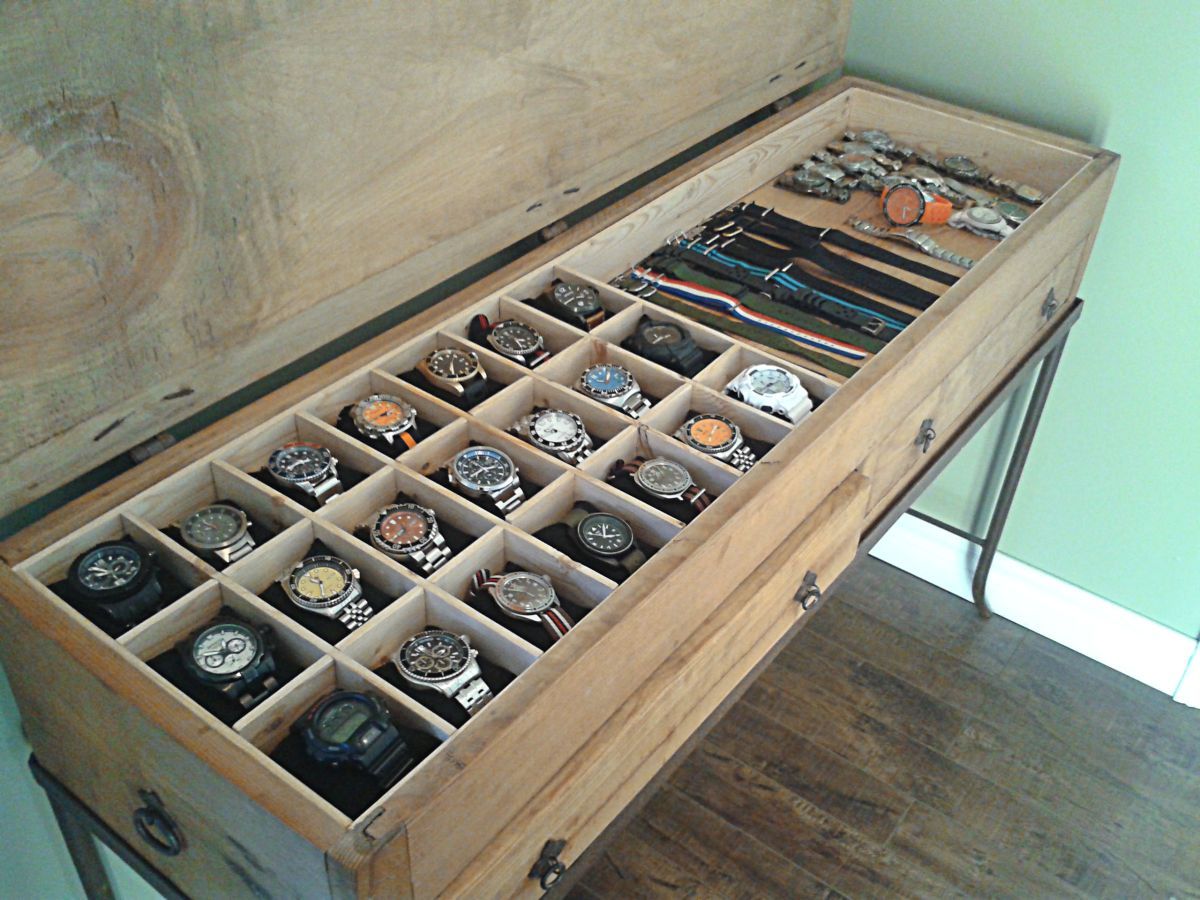




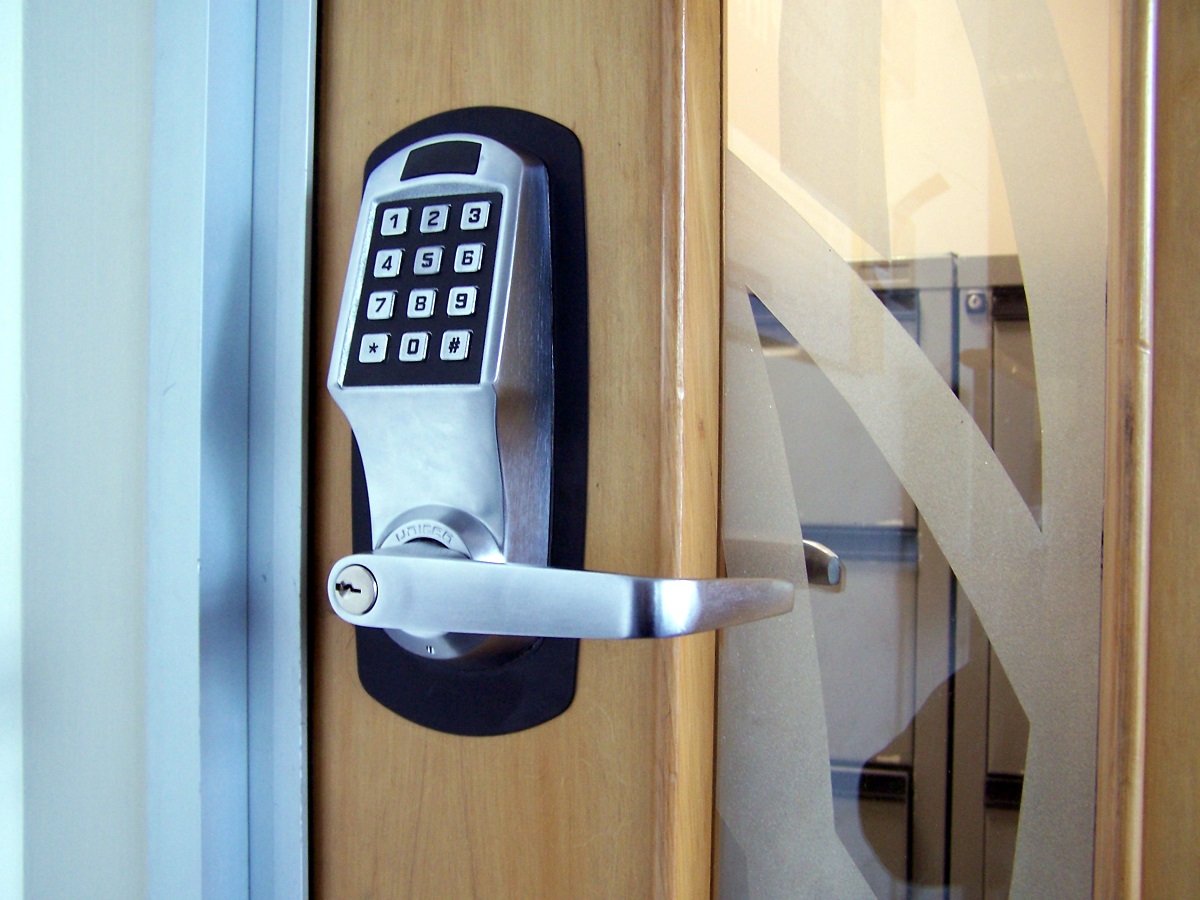

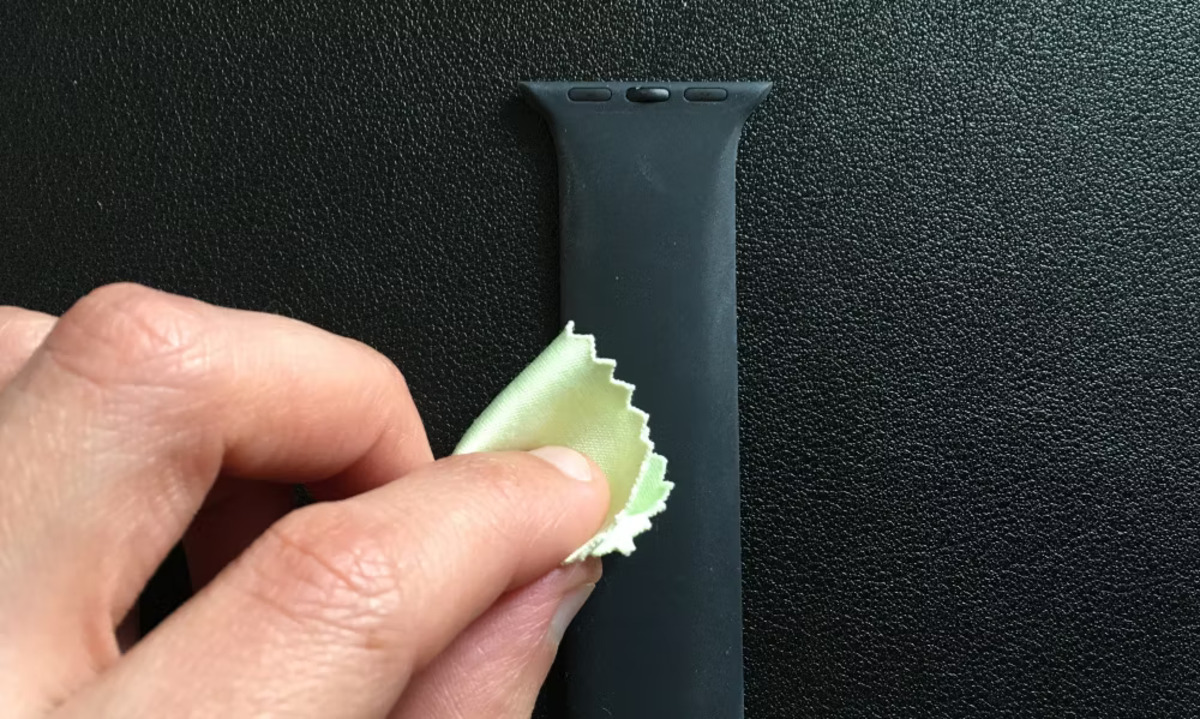
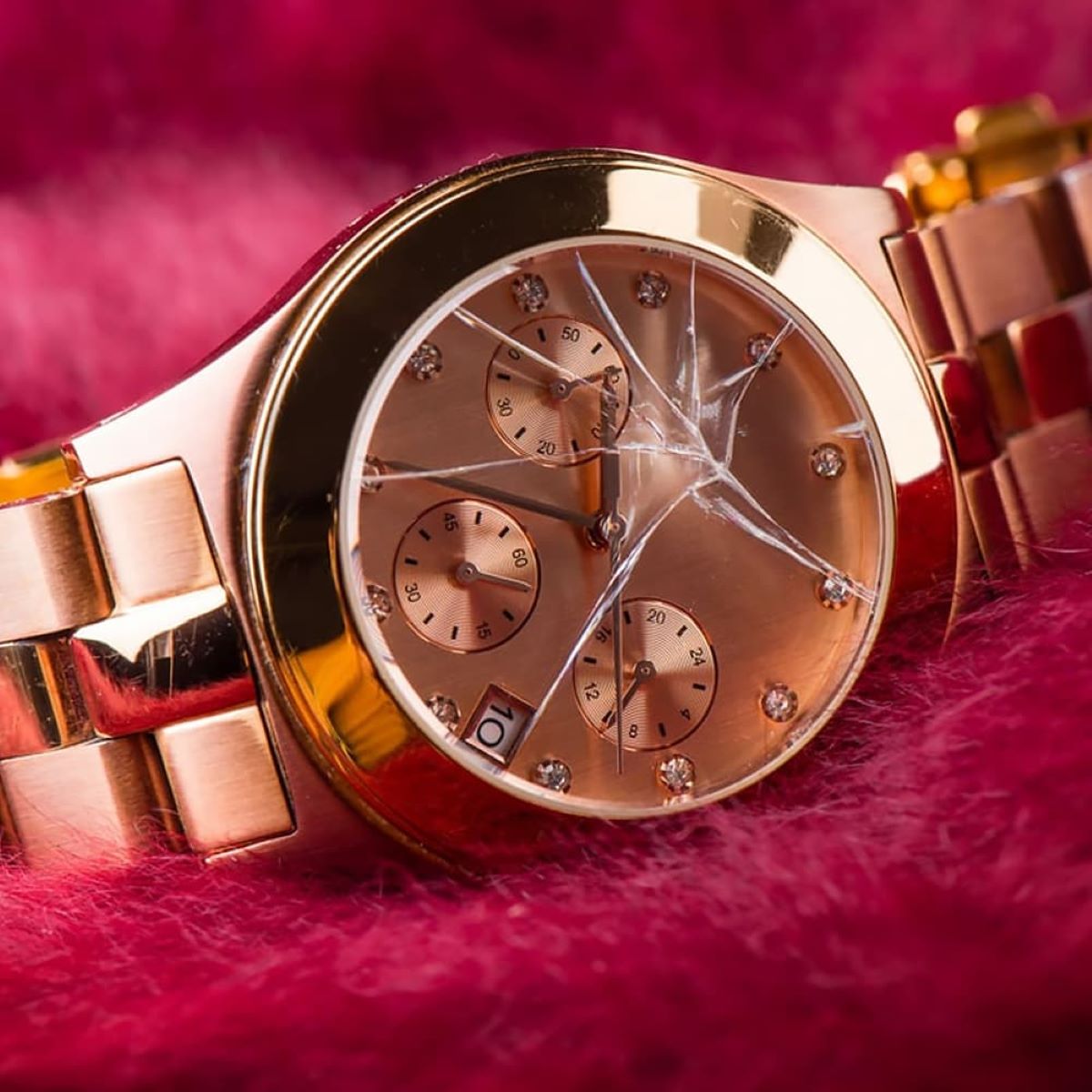

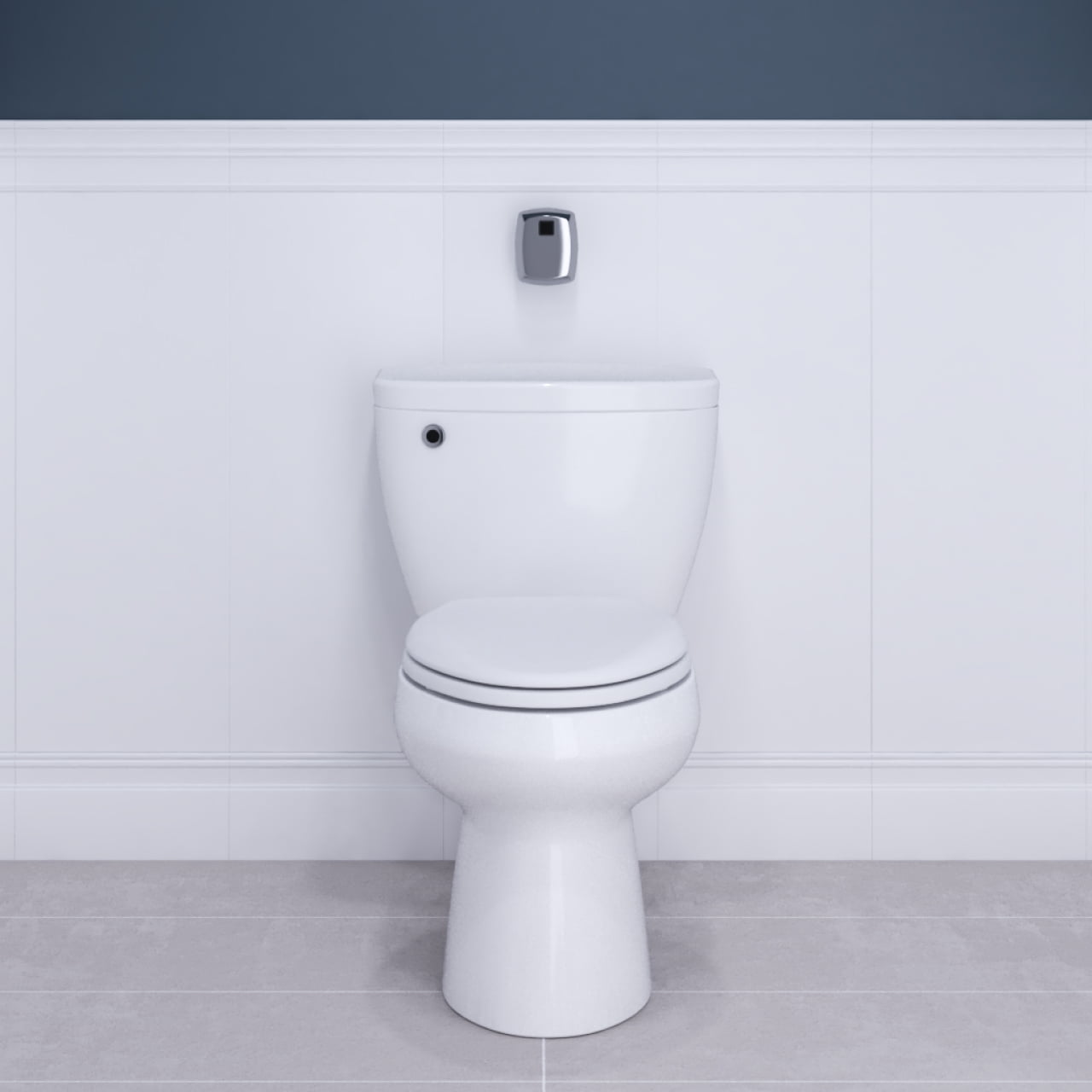
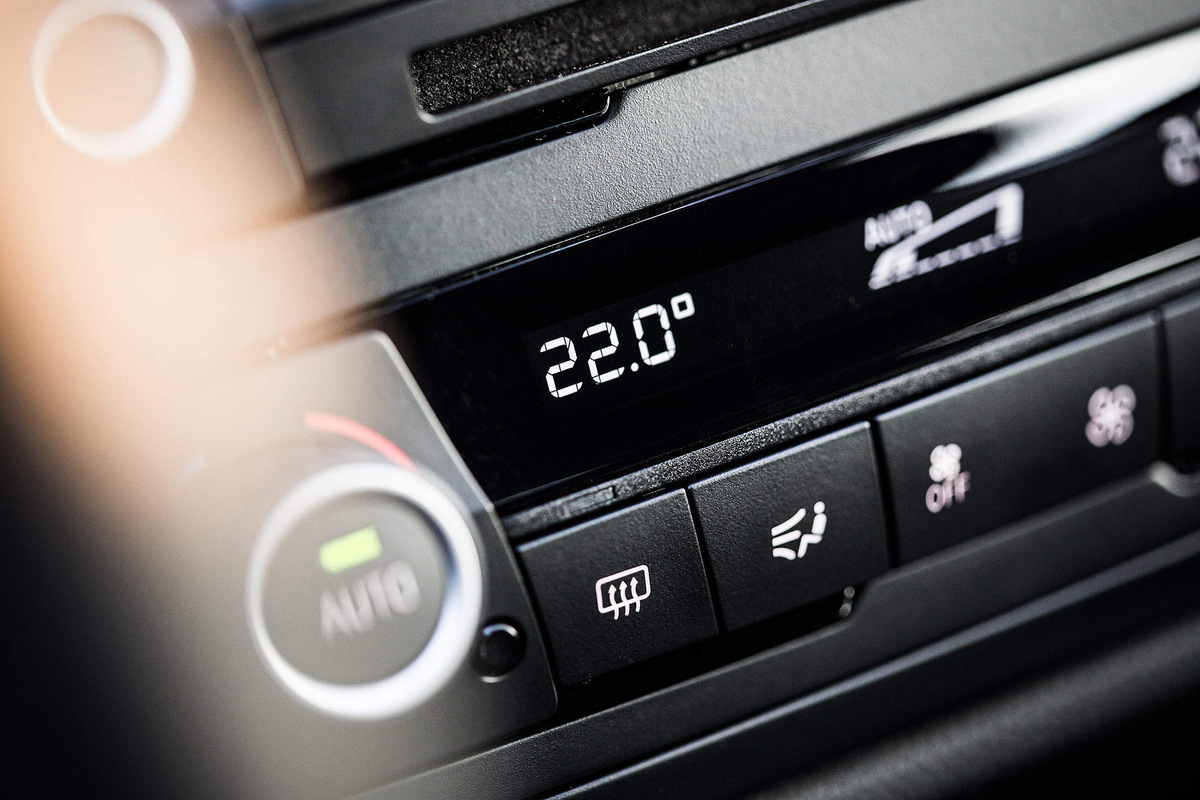

0 thoughts on “How To Store An Automatic Watch”